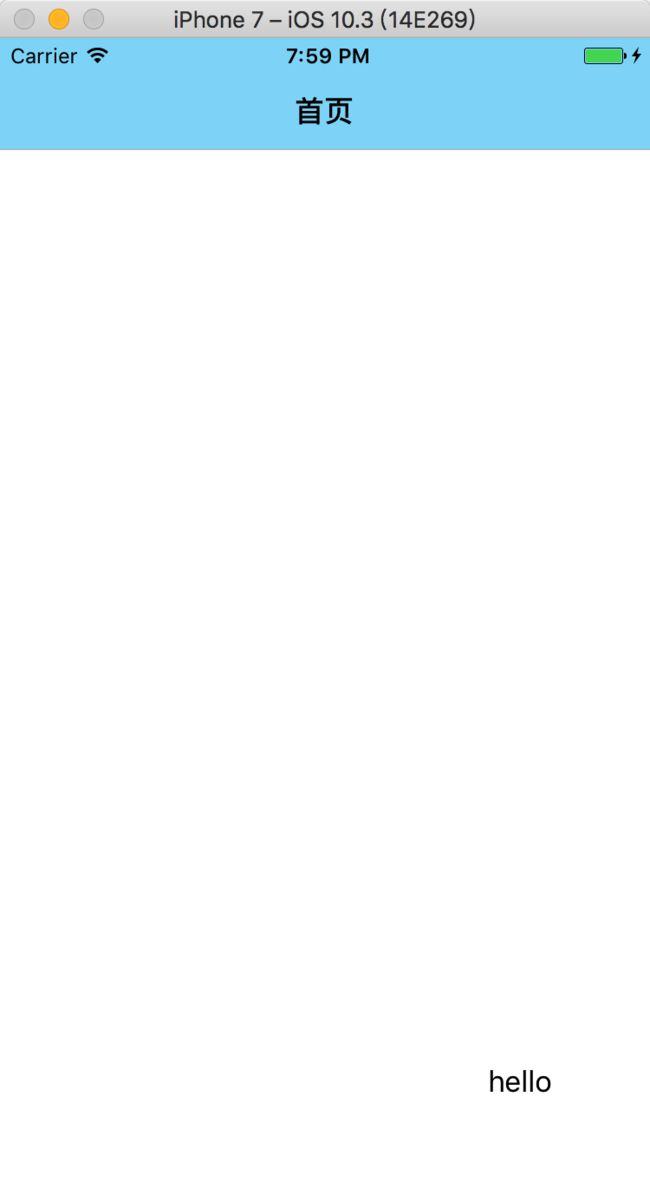初次尝试了纯代码编写UI,了解到ios的屏幕适配比较麻烦 , 于是乎稍微学习了一下关于屏幕适配的知识,了解了NSLayoutConstraint约束。
首先NSLayoutConstraint的参数
* 约束 NSLayoutConstraint 参数 说明:
* item 自身控件
* attribute 自身控件的属性
* relatedBy 大小判断 如:大于等于 小于等于 等于
* toItem 相对控件
* attribute 相对控件的属性
* multiplier 属性值乘多少
* constant : 属性值加多少
* NSLayoutConstraint : ( item:某个控件 attribute:属性值 relatedBy:等于 toItem:相对控件 attribute:属性值 multiplier:属性值乘多少 constant:属性值价多少)
*
* 添加约束 addConstraint
然后Swift代码
let myView = UIView(frame: (self.view?.bounds)!)
let label = UILabel()
self.view = myView
self.view.addSubview(label)
label.text = "hello"
label.textAlignment = .center
//self.view.translatesAutoresizingMaskIntoConstraints = false
//label!.superview!.translatesAutoresizingMaskIntoConstraints = false
//这里貌似设置顶层的View的为false
label.translatesAutoresizingMaskIntoConstraints = false
//需要将控件 label.translatesAutoresizingMaskIntoConstraints = false
//系统默认赋予控件autoresizing约束,需要关闭,否则会出现崩溃
let widthConstraint = NSLayoutConstraint(item: label, attribute: .width, relatedBy: .equal, toItem: nil, attribute: .notAnAttribute, multiplier: 1.0, constant: 50)
//设置约束条件
label.addConstraint(widthConstraint)
//为控件添加约束
let heightConstraint = NSLayoutConstraint(item: label, attribute: .height, relatedBy: .equal, toItem: nil, attribute: .notAnAttribute, multiplier: 1.0, constant: 30)
label.addConstraint(heightConstraint)
let rightConstraint = NSLayoutConstraint(item: label, attribute: .right, relatedBy: .equal, toItem: self.view, attribute: .right, multiplier: 1.0, constant: -50)
label.superview!.addConstraint(rightConstraint)
//为父级控件添加约束
let topConstraint = NSLayoutConstraint(item: label, attribute: .bottom, relatedBy: .equal, toItem: self.view, attribute: .bottom, multiplier: 1.0, constant: -50)
label.superview!.addConstraint(topConstraint)
// let centerYConstraint = NSLayoutConstraint(item: label, attribute: .centerY, relatedBy: .equal, toItem: self.view, attribute: .centerY, multiplier: 1.0, constant: 0)
// label.superview!.addConstraint(centerYConstraint)
//
// let centerXConstraint = NSLayoutConstraint(item: label, attribute: .centerX, relatedBy: .equal, toItem: self.view, attribute: .centerX, multiplier: 1.0, constant: 0)
// label.superview!.addConstraint(centerXConstraint)
要注意的是:控件必须已经添加入视图后才能添加约束
SE的显示效果
7的显示效果
初学ios开发,如有错误,还请帮忙指出

